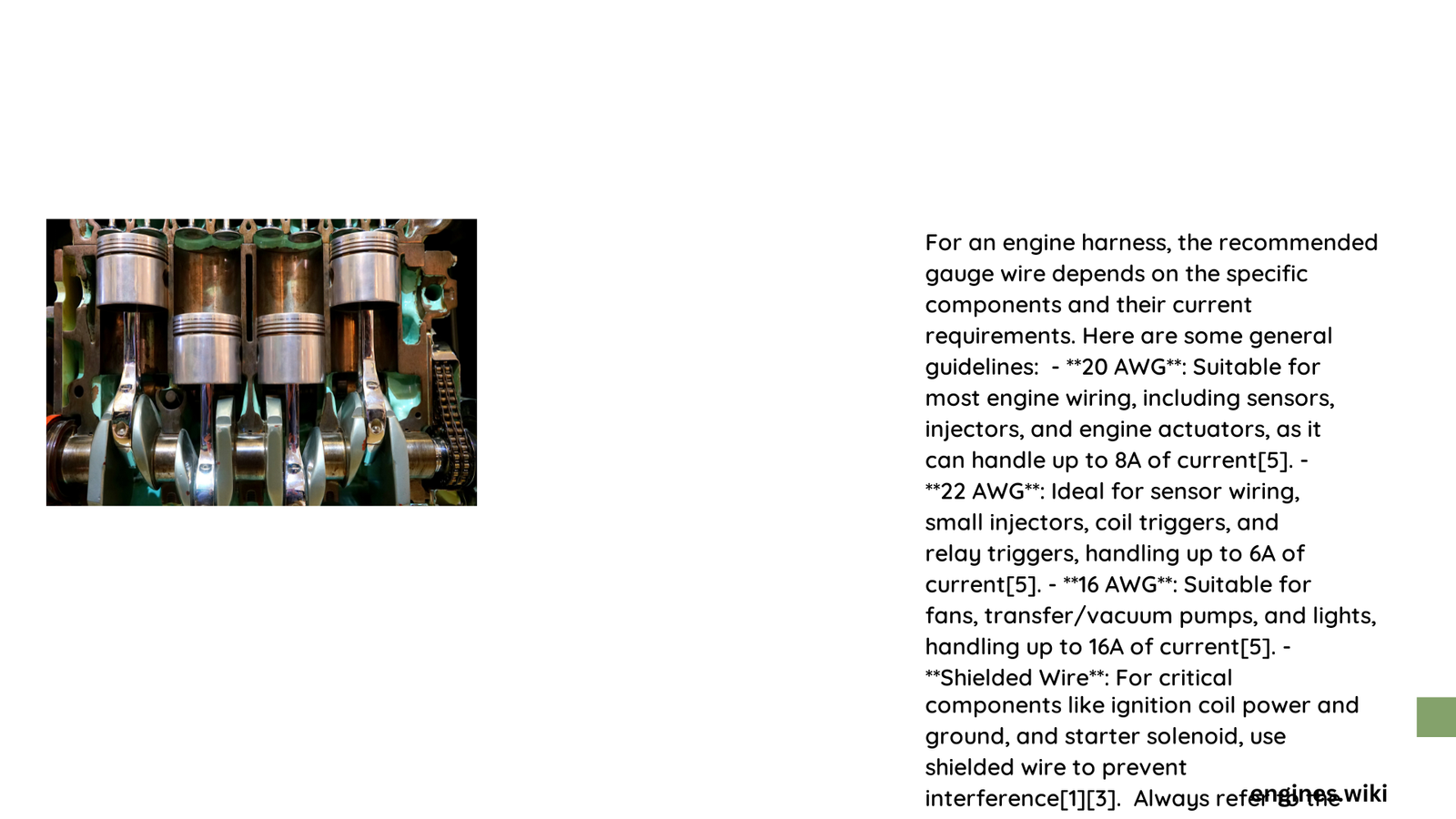Selecting the correct wire gauge for an engine harness is a critical decision that directly impacts electrical system performance, component reliability, and overall vehicle functionality. Automotive electrical systems demand precise wire sizing to manage current flow, minimize voltage drop, and ensure optimal component operation across various environmental conditions and electrical loads.
What Determines Wire Gauge Selection for Engine Harness?
Why Current Draw Matters Most?
When determining the appropriate wire gauge for an engine harness, current draw becomes the primary consideration. Different automotive components require specific electrical capacities:
- Low Current Components (5-10 amps):
- Sensors
- Small relays
- Indicator lights
-
Recommended: 18-20 AWG wire
-
Medium Current Components (10-20 amps):
- Fuel pumps
- Electric fans
- Window motors
-
Recommended: 16-14 AWG wire
-
High Current Components (20-30 amps):
- Starter motors
- High-performance fuel pumps
- Large radiator fans
- Recommended: 12-10 AWG wire
How Wire Length Impacts Gauge Selection?
| Wire Gauge | Maximum Length (Feet) | Current Capacity | Typical Applications |
|---|---|---|---|
| 20 AWG | 2-4 feet | 5-7 amps | Sensors, small signals |
| 18 AWG | 4-7 feet | 7-10 amps | Small electrical components |
| 16 AWG | 7-12 feet | 10-15 amps | Moderate electrical loads |
| 14 AWG | 12-20 feet | 15-20 amps | Fuel pumps, electric fans |
| 12 AWG | 20-30 feet | 20-25 amps | High-performance components |
| 10 AWG | 30-50 feet | 25-35 amps | Heavy-duty electrical systems |
What Are Critical Voltage Drop Considerations?
Voltage drop represents electrical energy loss during transmission through a wire. Key factors include:
- Acceptable Voltage Drop: Maintain below 2% for optimal performance
- Temperature Effects: Higher temperatures increase resistance
- Wire Material: Copper provides superior conductivity
- Connection Quality: Proper terminations minimize additional resistance
How to Calculate Proper Wire Gauge?
Calculating the correct wire gauge involves multiple variables:
- Multiply maximum expected current by wire length
- Consider environmental temperature
- Account for additional electrical load
- Use professional automotive wire gauge charts
What Are Common Mistakes to Avoid?
- Undersizing Wire: Leads to overheating and potential failure
- Overlooking Environmental Factors: Extreme temperatures impact wire performance
- Ignoring Voltage Drop: Can cause component malfunction
- Using Non-Automotive Grade Wiring: Reduces reliability
Pro Tips for Engine Harness Wiring
- Always use stranded wire for flexibility
- Utilize heat-resistant wire insulation
- Implement proper wire routing
- Use high-quality connectors and terminals
- Consider future electrical modifications
Conclusion

Selecting the correct wire gauge requires careful analysis of current requirements, wire length, and environmental conditions. Professional consultation and thorough research remain crucial for optimal engine harness design.
